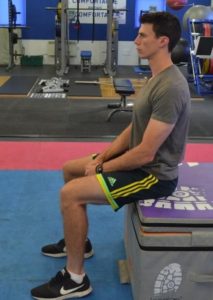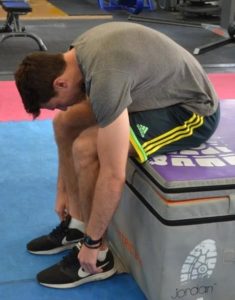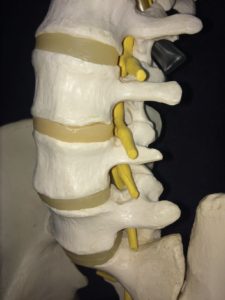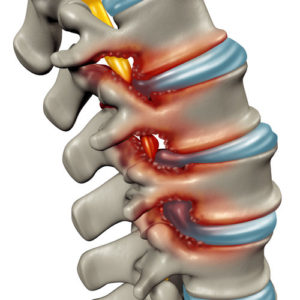Back pain when walking can be caused by many different reasons. It can range from really debilitating to a slight annoyance, and sometimes become a threat to someone’s independence. Here, we will talk about the probable causes of back pain when walking to help you figure out why it’s happening to you.
Aims of this post:
- To talk about the issues that cause back pain to occur when walking
- To describe what spinal stenosis is and who it affects
- To discuss mechanical back pain and give you some resources to help fix it
Before we dive in, please be aware that we are part of the Amazon Affiliate programme. This page may contain Amazon affiliate links, so if you choose to purchase a product for your sciatica that we recommend through a link on this page, we will receive a small commission at no extra cost to you. This helps us keep Overcome Sciatica alive! Thank you for your support. Please be assured that we only ever recommend products that we truly believe can help.
Why Do I Get Back Pain When Walking?
Back pain when walking can be confusing, both for people that suffer with it and healthcare professionals.
Many of the resources online don’t do a good job of explaining these issues to the people going through them, so hopefully this article can clear up some of the worries and answer the questions that you have about this problem.
Before we start, if you want to read more about leg pain or “sciatica”, you can click HERE.
1) Mechanical back pain
Mechanical back pain is the most common cause of back pain when walking.
Mechanical back pain is used to describe back pain that responds to movement.
Quite often, individuals with mechanical back pain get back pain when walking. They might also suffer with a radiating, dull ache in the buttocks at the same time as the back pain.
This pain in the legs is usually what we call “somatic-referred pain”, which is when the pain from your back radiates down into the buttock and thigh. We don’t fully understand why this occurs but it isn’t a symptom that you need to worry too much about.
There are hundreds of causes of mechanical back pain, with most of them being completely harmless and transient.
Back pain can occur WITHOUT the presence of damage to anything in the back.
I wrote about this phenomenon HERE.
Try not to worry about back pain when walking if it is a new symptom! Worrying about back pain can actually make it worse!
Mechanical back pain is most likely if you get back pain at other times of the day too; for example, if you’ve been sitting for a long time, you might feel this same stiffness develop. Equally, with mechanical back pain you might find that your back hurts when lifting and reaching overhead too.
Mechanical back pain will probably clear within about 12 weeks in at least 80% of cases.
There are some things you can do to speed this process along. One of the main things that causes mechanical back pain is a change to the way the muscles from the back and legs are pulling on the pelvis.
This can affect something we call the “biomechanics” of your spine.
When the biomechanics of your back change, more force is put through parts of the back that aren’t designed to take that force. As a result, we can feel pain as a way of our body complaining.
To correct these biomechanical abnormalities, often a simple stretching programme of the lower limbs can work wonders.
If your back and leg pain when walking hasn’t cleared within 6 weeks, it might be an idea to speak to your doctor about why this is happening.
2) Spinal Stenosis
Spinal stenosis is another common cause of back and leg pain when walking
This type of problem can cause the pain in your back to spread down into your buttocks and sometimes even to your calves as you continue to walk.
Symptoms of Spinal Stenosis
The pain from spinal stenosis is often described to us as back ache upon standing, which then progresses to a dull throb in your back and calves as you continue walking, but goes away quickly as you sit down.
You might find that leaning forward as you walk, like when you’re at the supermarket pushing your trolley, can ease the pain. This causes some people with spinal stenosis to constantly lean forward when they walk.
Within our spines, the nerves that arise from the spinal cord leave the lower back through very tight spaces between the joints and discs.
You can see the nerve roots (yellow) exiting the narrow gaps in the spine in this photo.
In spinal stenosis, due to degeneration of the discs and joints, these small spaces get even tighter. This causes compression on the yellow nerve roots.
This low-level compression gets worse with weight bearing activity. That is why people with spinal stenosis get worsening symptoms as they continue to walk.
True spinal stenosis rarely affects people under the age of 60. You may have been told you have a degree of “stenosis” to one area in your back if you’ve had an MRI scan, which simply means narrowing.
However, true spinal stenosis is characterised by global joint deterioration of the lumbar spine.
The reason the pain is worse when you walk is purely due to being upright; the position that your spine is in when you are upright and walking seems to make this compressing effect worse in spinal stenosis, which is why the symptoms improve when you sit down.
Simple steps to control spinal stenosis
Most people think that standing upright is good for your posture and will ultimately help. This is in fact not always true – and especially not if you have spinal stenosis!
Allowing yourself to lean forward slightly or slouch will do a great deal to bring your symptoms under control.
Long gone are the days when we thought that everyone should maintain a ‘military posture’ at all times for their health!
This type of posture is certainly not a “fix all” for those trying to get rid of sciatica caused by spinal stenosis.
A True Story
I had one patient (a man in his eighties) who came in with his wife. He had spinal stenosis and was getting back and leg pain every time he would walk upright, so in order to ease this he would lean forward as he walked.
However, his wife assumed that the forward leaning would make his problem worse, and kept telling him to stand upright! They even bought him a posture belt to keep him upright!
Of course, this man was in a terrible way when he came in to see me.
After a long chat about why it is OK to lean forward as you walk when you have spinal stenosis, she felt terrible about having made her poor husband walk in a painful position for so long!
It wasn’t her fault though, we have been taught over the last 100 years that maintaining a “military” posture is the right thing to do. We know now that this isn’t the case for back and leg pain when walking!
With the appropriate postural advice, stretches for your legs and certain pain relieving techniques, the outcome with conservative management is often on par with that of a successful surgical case.
Are You Looking for RAPID Relief from Sciatica?
My good friend, colleague and fellow international sciatica expert, Dean Volk, has a brand new sciatica relief video course available – and I’m delighted to be an official sponsor!
Check out Dean Volk’s “Kicking Sciatica OUT of the Butt!” Online Pain Relief Course Here!
I can proudly recommend Dean and his course for sciatica sufferers – because I’ve seen his incredible results first-hand. You can check out his course (and get lifetime access to the videos and bonus content) by clicking HERE.
Stretches for spinal stenosis
The exercises provided on this page for informational purposes only and are not designed to be a ‘prescription’ of any kind. Be sure to check with your healthcare provider before you begin any new exercise programme.
The article I linked to earlier has some very effective stretches for the lower limbs.
However, people with spinal stenosis will also benefit from a type of exercise called “flexion exercises”.
These exercises basically involve bending/flexing the lower back in a variety of gentle ways.
Try the following stretch below:



Does Spinal Stenosis Require Surgery?
There are some surgical techniques that can alleviate some of the symptoms of spinal stenosis, such as a lumbar decompression.
We wouldn’t usually recommend surgery for this condition; partly because the risk of complications are so high! The other reason is that it’s not guaranteed that you will get a successful outcome – in fact far from it…
One third of people get a good outcome…
One third of people get no change to their symptoms…
And one third of people actually get worse following surgery!
Read more about surgery for sciatica HERE.
The symptoms of spinal stenosis can be treatable, and although the problem within the spine cannot be cured, the condition does not have to affect you as much as it may do now.
With appropriate advice and guidance, your symptoms can improve over time.
I hope this article has helped put your mind at ease when it comes to back pain when walking.
Thanks as always for reading!
The information on Overcome Sciatica should never be used as a substitute for medical advice from a doctor. Never put into action any tips or techniques from Overcome Sciatica without checking with your doctor first. Please see full terms of use here.








This is so comforting, Will, thank you! At my age I do worry about pain, especially if it is unusual and any back pain is always a worry as I fear it MIGHT be the forerunner of something more serious. I love that you provide manageable exercises/treatments we can take on for ourselves and have found them SO effective at relieving and strengthening my back and lumbar regions. thank you that I am now able to regain my independence and activity levels have improved so dramatically, thanks to all your professional input!